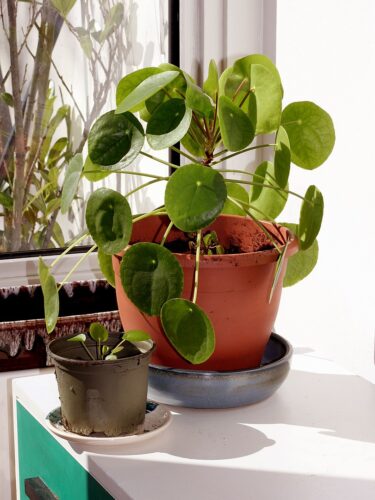The pancake plant is a popular houseplant that is easy to care for because of its beautiful coin-shaped leaves.
Also known as:
Pancake plant
Chinese Money Plant
You are viewing the mobile-adapted version of the page.
The one for tablets, laptop and desktop also provides general information, such as origin, toxicity and cultivation.
The Pancake plant (Pilea Peperomioides) is a popular houseplant that is easy to care for because of its beautiful coin-shaped leaves. This evergreen perennial of the nettle family (Urticaceae) is native to southern China and grows there at the foot of the Himalayas.
The plant is special because of the unique leaf. In the wild, small, white flowers appear in spring. However, the pancake plant usually does not bloom indoors.
The pancake plant is a strong houseplant that is not very susceptible to pests and diseases.
Location: in a bright spot in a warm room. Not too much direct sunlight. Not on the trip.
Soil: rich, well-drained soil. Preferably high-quality organic potting soil based on coconut. Backfill the soil with perlite to prevent the soil from getting too wet. A pH between 6.0-7.0 is best for the pancake plant.
Repotting : annually in the spring: always in a pot that is slightly larger each year.
Watering: Only give the pancake plant a little water once a week. Because the plant does not tolerate wet feet very well, the plant only needs a little water – just enough to prevent it from drying out. Water on the soil, not on the leaf.
Care: carefully rinse the plant outdoors in the spring. Cut yellowed and old leaves. In the spring and summer, give some liquid plant food every month.
Cuttings: The offshoots to be cut usually grow from the root system and sometimes from the places where old leaves have fallen off. Cut the suckers when they are a few inches long. Expose the roots of the sucker and then cut them off the main root with a clean knife or pruning shears a few inches below the soil. Plant the cutting immediately in moist soil in its own pot. Keep the soil moist (but not too wet) until the new plant takes root.
Bugs
Small insects seem to be stuck on all parts of the plant, leaves sometimes yellow and deform: mealybugs or scale insects. Sometimes mold (sooty mold) can also be seen on the honeydew that aphids secrete.
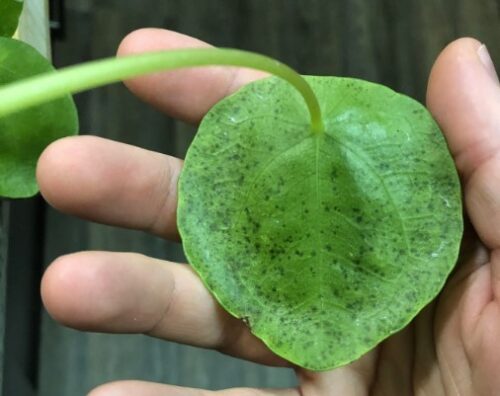
Black spots on the underside of the leaf: whitefly. Because these flies also secrete honeydew, sooty mold often forms as well. And this fungus is the cause of the black spots.
Fungi & diseases
The pancake plant is not very sensitive to fungi and diseases.
Care
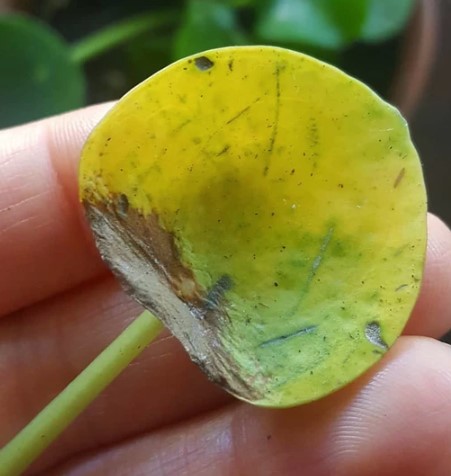
Leaf yellows and falls off: potassium deficiency. It seems as if the plant is burned by too much light; but if not, then the pancake plant has a potassium deficiency.
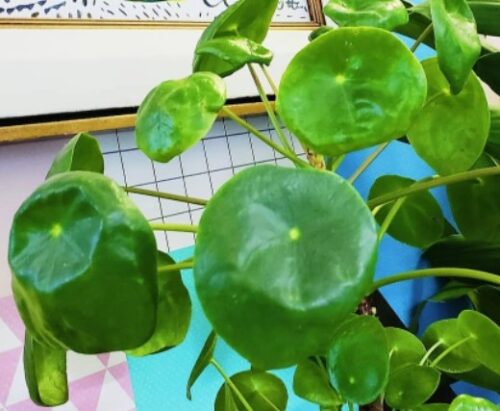
Leaves curl cup-shaped inwards: heat stress – the plant is kept in a room above 27°C for a longer period of time. Move the plant to an area with a temperature between 15°C and 23°C.
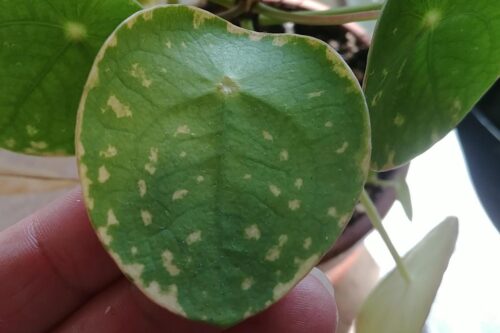
Leaf gets yellow edges: too much direct light. The pancake plant likes a light spot, but not direct sunlight.
Leaves droop and dry out: too little water.
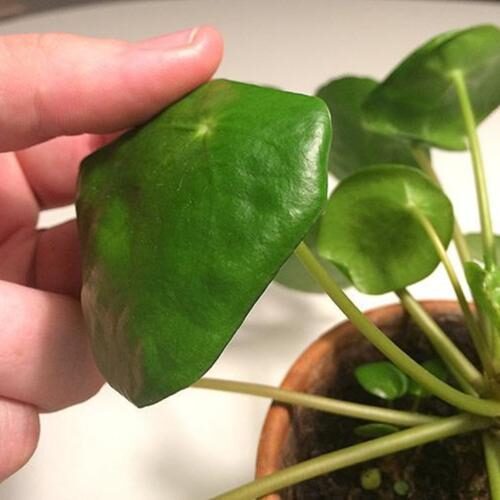
Upper leaves curl at the edges: too much (direct) light. Lower leaves curl: too much water.
Small leaves and long stems: too little light: place the plant in a place with more light (no direct sunlight).

